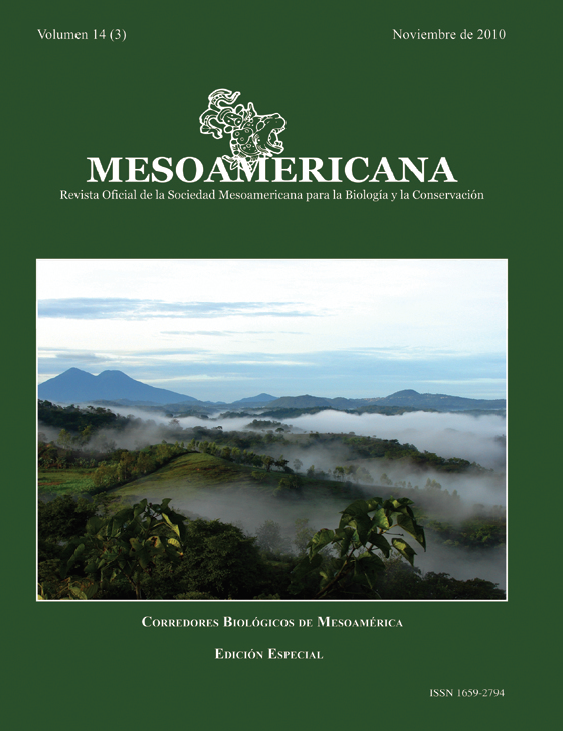

Numerous studies have shown the importance of coffee agroforestry systems for avifauna biodiversity. However, there is still little known on how the structural complexity of coffee agroforestry systems and landscape context affect composition in these systems. This study explored the relationships between structural complexity, landscape context (surrounding forest cover), and bird communities present in these systems within the Volcánica Central-Talamanca Biological Corridor (CBVCT), Costa Rica. We examined the structural, floristic and management characteristics of 20 shade coffee farms with Erythrina poeppigiana (CE) and 20 shade coffee farms with E. poeppigiana and Cordia alliodora (CEC). The percentage of forest cover around each farm was calculated at distance radius of 500 m, 1000 m and 1500 m in order to examine the effect of landscape context. Birds were sampled in the 40 coffee farms and five forests by using point counts. A total of 1687 individuals (101 species of birds) were observed in coffee farms, the majority of which were generalist species. A total of 1064 individuals (85 species) were registered in CEC farms and 623 individuals (56 species) were registered in CE farms, indicating greater species richness, abundance and bird diversity in coffee farms with greater structural complexity explained by the presence of a timber tree species such as C. alliodora, epiphytes and a higher canopy. The surrounding forest cover had a negative effect in the overall abundance, species richness, and diversity of generalist birds, but had a positive effect on specialists, indicating that coffee agroforestry systems with greater structural complexity and high surrounding forest cover can harbor some bird species with a high conservation value. Increasing the structural complexity of coffee agroforestry systems and forest cover around coffee plantations can aid bird conservation efforts in anthropogenic landscapes.